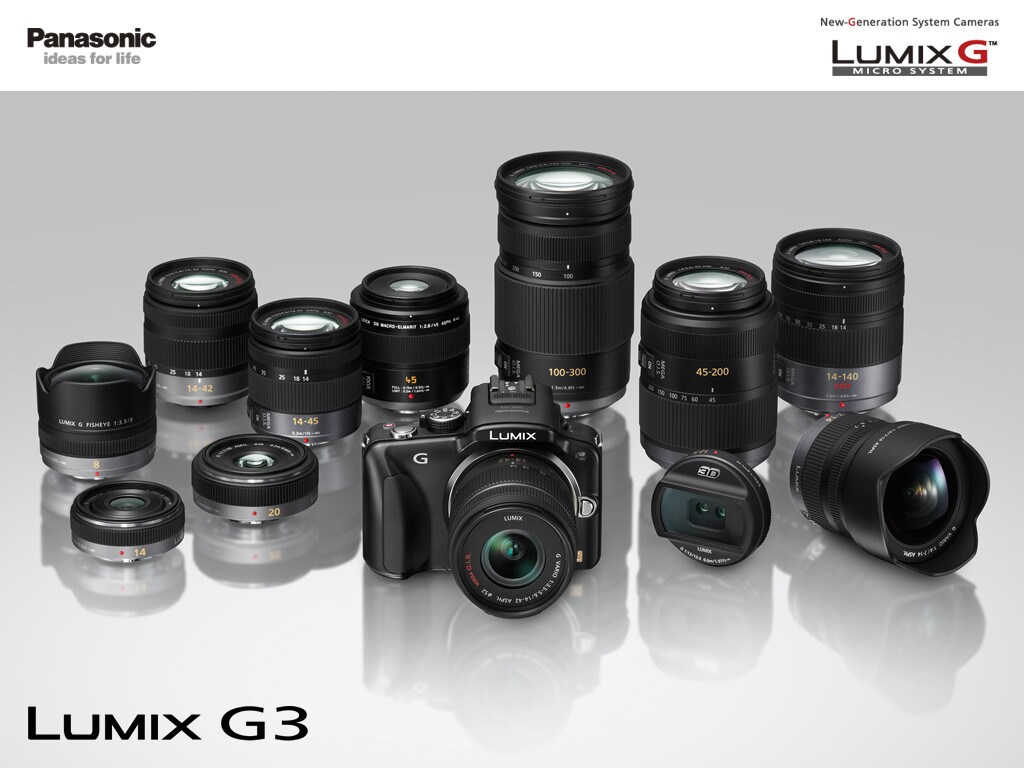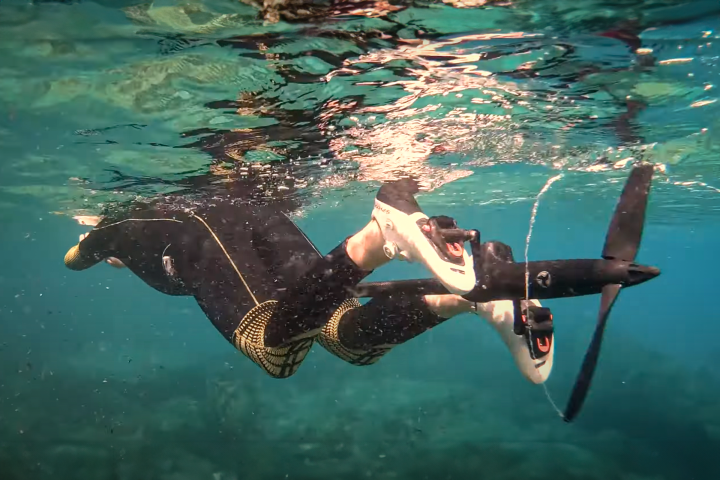Panasonic has announced the latest addition to its LUMIX G series of not-quite-compact cameras – the LUMIX DMC-G3. Smaller than a DSLR and larger than a pocket point-and-shoot, the G3 offers an interchangeable Micro Four Thirds lens mount, a 16 megapixel sensor, full HD video, and a rotating LCD touch screen.
The new LUMIX G3 is the successor to Panasonic's G2 model from 2010. Both cameras are smaller than a traditional DSLR camera, but more advanced (and larger) than pocket cameras. Panasonic calls the LUMIX Gs "compact system cameras" – basically these are mirror-less, intermediate-size cameras with interchangeable lenses, eye-level viewfinders, and hot-shoe flash mounts. Other cameras in this class include the Olympus E-PL2, the Samsung NX100, and the Sony Alpha SLT-A55.
The features of the G3 fall between the GF2 and GH2. The G3 has a 16 MP Live MOS sensor, compared to the GF2's 12.1 MP sensor, but lacks the advanced video and audio input capabilities of the GH2. Panasonic is hoping that the G3 will attract photographers looking to step up from a compact point-and-shoot, while also appealing to DSLR shooters perhaps looking for a smaller on-the-go camera.
The G3 sports several traditional DSLR controls, such as an external mode dial for selecting common shooting modes, a flash and accessory hot-shoe mount, and an electronic eye-level viewfinder. The viewfinder is in addition to the rear-mount LCD, and provides a 100 percent field of view.
The rear-mounted viewfinder is the same 3-inch touchscreen found on the G2 and GH2. It's articulated, and can be rotated 180 degrees horizontally and tilted 270 degrees up and down.
Many features can be accessed directly through the touchscreen, including Panasonic's touch-control focusing. To focus on a subject, simply touch it on the screen. The G3 will lock on, and automatically tracks the subject, even as it moves. The G3 features 23 auto-focus points, as well as the new Pinpoint AF, which allows precise pixel-level focus anywhere on the screen.
Panasonic says it has improved focusing speed on the G3 with the new Precision Contrast LightSpeed AF system, which doubles the Live MOS sensor drive speed from 60 fps to 120 fps. The company claims focus times of about 0.1 second, depending on the focal length.
Another focus enhancement is a picture-in-picture manual control that magnifies part of the image on the view screen, while keeping the rest of the image visible as a framing reference.
The G3's 16.0-megapixel Live MOS sensor is yoked to the Venus Engine FHD image processor from the GF2 and GH2. The sensor features on-chip selective noise reduction, similar to Sony's Exmor sensors. Panasonic claims noise suppression of more than 66 percent, and a 200 percent improvement in signal-to-noise when shooting at higher ISO settings. The G3 also features a hypersonic dust reduction system to help keep the sensor clean.
Shooting speeds at full resolution are up to 4 frames per second. By reducing the image size to 4 megapixels, the G3 can shoot at up to 20 frames per second. The G3 also features in-camera image stabilization.
The G3 features Panasonic's intelligent auto features, known as "iA". With iA, the camera automatically determines the scene mode and sets focus, brightness, and other parameters. The G3 also offers iA Plus mode, which lets you shoot in full auto but still adjust exposure, white balance, or depth-of-field (which Panasonic calls "background defocusing"). These tweaks are made using sliders on the touchscreen. Standard in-camera creative effects such as Sepia, Retro, and so on are also available.
There's also full HD video capability, at 1920 x 1080 pixels. This is an increase from the 720p HD on the G2, and similar to the LUMIX GH2. However, the G3 lacks some of the video features found on the GH2, such as external microphone jacks (the G3 has built-in stereo mics only) and multiple video formats (the G3 is AVCHD only).

The camera uses the Micro Four Thirds lens mounting system. The kit lens is a 14-42mm zoom with image stabilization. Panasonic also offers 11 compatible G Vario lenses including a 14-140mm zoom that offers a 10x range, and the 3D lens we covered previously. Adapters are available for mounting older Leica M and R lenses, including previous LUMIX Micro Four Thirds lenses.
The G3 chassis is made of aluminum, and weighs about 10 percent less than the G2 at 11.8 ounces (0.3 kg). The camera will be offered in black, red, white, or brown. For connectivity, the G3 provides a USB 2.0 port, NTSC/PAL video out (NTSC / PAL), HDMI, and a wired remote control port (for the optional DMW-RSL1 remote). Storage is via SD memory card (SD/SDHC/SDXC).
The Panasonic LUMIX DMC G3 will be available in June, at US$700, including the 14-42mm zoom lens.







